- Helenium: Planting, Care, and Cultivation Expert Guide
- Introduction
- Planting
- Care
- Cultivation
- Choosing the Right Helenium Variety
- Growing Conditions
- Height and Spread
- Color and Flowering Time
- Local Adaptation
- Comparing Varieties
- Preparing the Soil for Helenium
- Selection of soil
- Soil pH testing
- Soil preparation
- Adding organic matter
- Soil amendment
- Final soil preparation
- Planting Helenium: Tips and Tricks
- Choosing the Right Location
- Preparing the Soil
- Planting Helenium
- Caring for Helenium
- Propagation
- Pest and Disease Control
- Caring for Helenium Plants
- 1. Sun and Soil Requirements
- 2. Watering
- 3. Fertilizing
- 4. Deadheading
- 5. Mulching
- 6. Disease and Pest Control
- 7. Dividing and Propagation
- 8. Winter Care
- Watering and Fertilizing Helenium
- Watering:
- Fertilizing:
- Additional Tips:
- Pruning and Deadheading Helenium
- When to Prune
- Pruning Technique
- Deadheading Technique
- Fertilizing after Pruning and Deadheading
- Conclusion
- Dealing with Common Helenium Pests and Diseases
- Pests
- Diseases
- Conclusion
- Dividing and Transplanting Helenium
- When to Divide Helenium
- Steps to Divide and Transplant Helenium
- Caring for Transplanted Helenium
- Questions and Answers:
- What is Helenium?
- Where should I plant Helenium?
- How do I care for Helenium?
- Can I grow Helenium from seeds?
- How tall do Helenium plants grow?
- Do deer like to eat Helenium?
- Videos: 7 Best Fall Flowers to Liven Up Your Autumn Garden With Bright Colors ☀️✨
If you are looking for a striking and easy-to-grow perennial flower, then Helenium may be the perfect choice for your garden. Commonly known as sneezeweed, this vibrant plant is native to North America and is a favorite among gardeners for its beautiful daisy-like blooms and long-lasting color.
When it comes to planting Helenium, it is important to choose a location that receives full sun to partial shade. This plant prefers well-draining soil, so make sure to prepare the soil by adding organic matter to improve its fertility and drainage. In terms of care, Helenium is a fairly low-maintenance plant. Regular watering is necessary, especially during dry periods, but be careful not to overwater as this can lead to root rot.
Cultivating Helenium is relatively straightforward. It can be propagated from seeds or by dividing mature plants. Plant the seeds in the early spring or late fall, and once they have sprouted, you can transplant them to their permanent location. If you choose to divide mature plants, do so in the early spring or late fall, making sure to separate the plants and replant them in well-prepared soil.
In conclusion, Helenium is a stunning perennial flower that will add a pop of color to your garden. With proper planting and care, this plant will thrive and provide you with beautiful blooms year after year. Whether you are a seasoned gardener or a beginner, Helenium is a great choice for any garden.
Helenium: Planting, Care, and Cultivation Expert Guide
Introduction
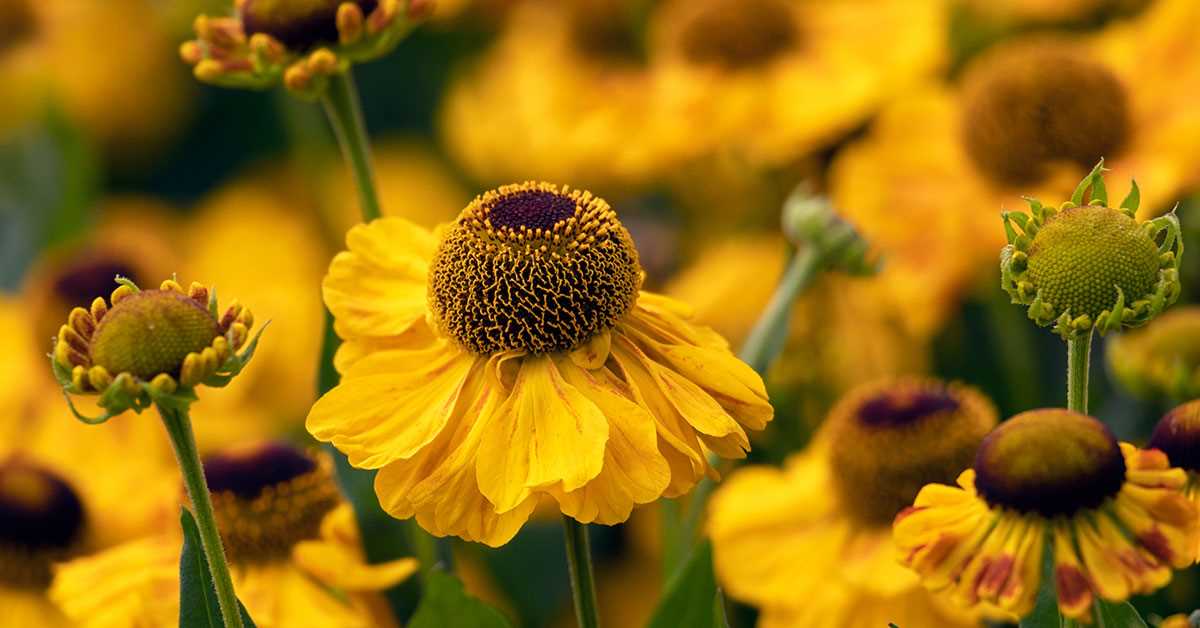
Helenium is a vibrant flowering plant that is native to North America. It is often referred to as “sneezeweed” due to its traditional use in making snuff. Helenium is a popular choice for gardens and landscapes due to its attractive flowers and ability to attract pollinators. In this expert guide, we will explore the planting, care, and cultivation of Helenium plants.
Planting
To plant Helenium, follow these steps:
- Choose a location that receives full sun to ensure optimal growth and flowering.
- Prepare the soil by removing any weeds and loosening it with a garden fork or tiller.
- Dig a hole that is slightly larger and deeper than the plant’s root ball.
- Place the Helenium plant in the hole and backfill with soil, firming it gently around the roots.
- Water the plant thoroughly after planting to help settle the soil.
Care
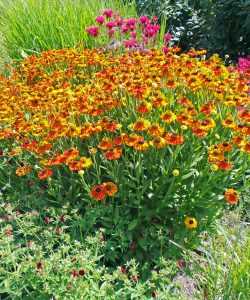
Proper care is essential to keep your Helenium plant healthy and vibrant. Here are some care tips:
- Watering: Helenium plants require regular watering, especially during periods of drought. Keep the soil evenly moist but avoid overwatering, as excessive moisture can lead to root rot.
- Fertilizing: Apply a balanced, slow-release fertilizer in spring to promote healthy growth and flowering. Follow the manufacturer’s instructions for the recommended dosage.
- Pruning: Deadhead spent flowers to encourage continuous blooming. Cut back the plant to the basal foliage in late fall or early spring to maintain its shape and prevent self-seeding.
- Mulching: Apply a layer of organic mulch around the base of the plant to help retain moisture, suppress weeds, and regulate soil temperature.
Cultivation
Helenium is a hardy perennial that can thrive in various climates. Here are some cultivation tips:
- Climate: Helenium plants prefer cool to moderate climates with a winter chill. They generally do best in USDA hardiness zones 3 to 8.
- Soil: Helenium plants prefer well-draining soil that is rich in organic matter. Amend heavy clay soils with compost or peat moss to improve drainage.
- Propagation: Helenium can be propagated by dividing mature plants in spring or early fall. Dig up the plant and separate the clumps, ensuring each division has roots and shoots. Replant the divisions in prepared soil.
- Pests and Diseases: Helenium plants are relatively resistant to pests and diseases. However, they can occasionally be affected by aphids, spider mites, or powdery mildew. Monitor the plants regularly and treat any issues promptly.
| Plant Type | Hardiness Zone | Height | Spacing |
|---|---|---|---|
| Helenium | 3-8 | 2-5 feet | 1-3 feet |
By following these planting, care, and cultivation tips, you can enjoy the beauty of Helenium plants in your garden for years to come. Whether you’re a seasoned gardener or just starting out, Helenium is a great addition to any landscape.
Choosing the Right Helenium Variety
When it comes to choosing the right Helenium variety for your garden, there are several factors to consider. These factors include the growing conditions of your garden, your personal preferences, and the specific characteristics of each Helenium variety. Here are some tips to help you make an informed decision:
Growing Conditions
Take into account the growing conditions of your garden, such as the amount of sunlight, soil type, and drainage. Some Helenium varieties prefer full sun, while others can tolerate partial shade. Additionally, Helenium plants thrive in well-drained soil, so make sure your garden provides the right conditions.
Height and Spread
Consider the height and spread of the Helenium variety you choose. Some Helenium varieties can grow quite tall, reaching up to 5 feet in height, while others stay more compact. Keep in mind the available space in your garden and choose a variety that fits well.
Color and Flowering Time
Helenium flowers come in a range of vibrant colors, including shades of yellow, orange, and red. Consider the color scheme of your garden and choose a Helenium variety that complements it. Additionally, different varieties may bloom at different times during the growing season, so choose one that aligns with your desired flowering time.
Local Adaptation
Some Helenium varieties may be more adapted to your specific region than others. Check with local nurseries or gardening experts to find out which varieties perform best in your area. Local adaptation can help ensure that your Helenium plants thrive and produce beautiful blooms.
Comparing Varieties
Once you have determined your preferences and the specific growing conditions of your garden, it’s time to compare different Helenium varieties. Create a list of the varieties that meet your criteria and compare them based on their attributes, such as height, spread, color, flowering time, and local adaptability. This will help you narrow down your choices and make an informed decision.
Remember, choosing the right Helenium variety is essential for a successful and visually appealing garden. By considering factors such as growing conditions, height and spread, color and flowering time, local adaptation, and comparing varieties, you can select the perfect Helenium plants for your garden.
Preparing the Soil for Helenium

Selection of soil
Before planting Helenium, it is essential to prepare the soil to create a favorable environment for the plant to thrive. Helenium generally prefers a well-draining soil with a pH range of 6.0 to 7.5. Choose a location with loamy or sandy soil, as these soil types provide better drainage. It is also important to ensure that the soil is rich in organic matter, as this helps retain moisture and provides essential nutrients to the plant.
Soil pH testing
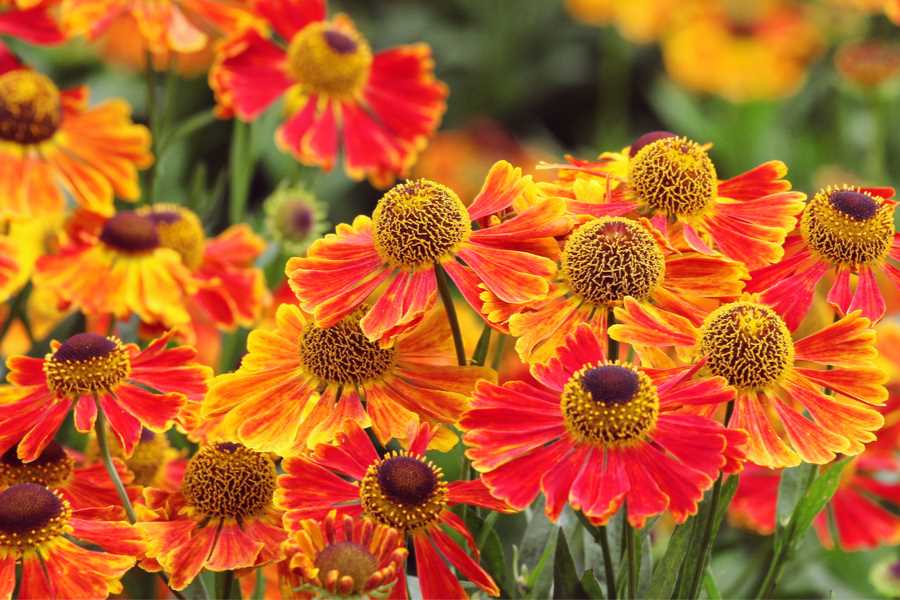
Testing the pH of the soil is crucial to determine its acidity or alkalinity. Purchase a soil testing kit from a local garden store or send a soil sample to a professional laboratory for analysis. Helenium prefers slightly acidic to neutral soil, so adjust the pH if necessary. Adding organic matter such as compost or aged manure can help improve the soil’s structure and balance its pH.
Soil preparation
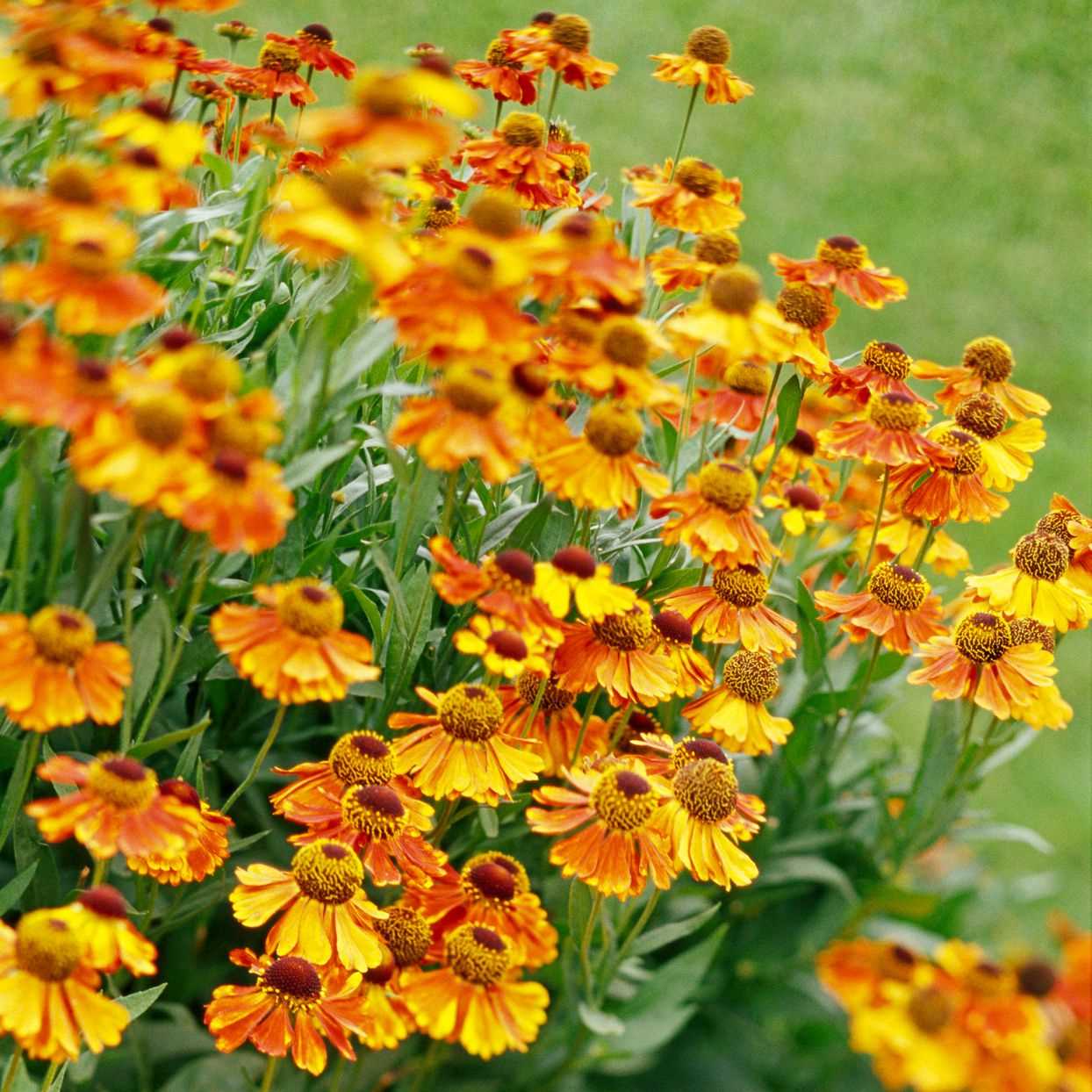
Begin by clearing the planting area of any weeds, rocks, or debris. Loosen the soil to a depth of 12-18 inches using a garden fork or tiller. This helps create a loose and well-aerated soil environment, allowing the roots to penetrate easily and establish themselves. Remove any large clumps or stones during the process.
Adding organic matter
Enrich the soil with organic matter to improve its fertility and moisture-retention capacity. Spread a layer of compost, well-rotted manure, or leaf mulch over the planting area. Aim for a thickness of 2-3 inches. Use a garden fork to gently work the organic matter into the top 6-8 inches of soil. This will help improve soil texture, drainage, and nutrient availability for the Helenium plants.
Soil amendment
If the soil is heavy clay or sandy, consider adding soil amendments to improve its texture and drainage. For clay soils, add Perlite, coarse sand, or peat moss to improve drainage. For sandy soils, adding organic matter such as compost or well-rotted manure can help improve water retention. Mix the amendments thoroughly with the existing soil to achieve a balanced texture and composition.
Final soil preparation
After adding organic matter and soil amendments, use a rake to level the soil surface. Remove any remaining debris or large clumps that may hinder the planting process. Water the soil lightly to settle it and allow it to drain before planting the Helenium.
Preparing the soil before planting Helenium is crucial for the plant’s overall health and growth. By providing the right soil conditions, you can ensure that your Helenium plants thrive and produce vibrant flowers.
Planting Helenium: Tips and Tricks
Planting helenium can be a rewarding experience, as these vibrant flowers can add a splash of color to any garden. Here are some tips and tricks to help you successfully grow helenium plants.
Choosing the Right Location
Helenium plants thrive in full sun, so it’s important to choose a location that receives at least 6 hours of direct sunlight each day. The soil should be well-drained and rich in organic matter. It’s also a good idea to choose a spot that is protected from strong winds, as helenium plants can be quite tall and may need support.
Preparing the Soil
Before planting helenium, it’s important to prepare the soil properly. Start by removing any weeds or grass from the planting area. Loosen the soil using a garden fork or tiller, and add organic matter such as compost or well-rotted manure to improve the soil’s fertility and drainage.
Planting Helenium
When planting helenium, make sure to space the plants about 12-18 inches apart to allow for sufficient airflow and growth. Dig a hole that is slightly larger than the root ball of the plant, and place the helenium plant in the hole, making sure the top of the root ball is level with the ground. Backfill the hole with soil, firming it gently around the roots.
Water the newly planted helenium thoroughly to help settle the soil and ensure good root establishment. Apply a layer of mulch around the plants to help conserve moisture and suppress weeds.
Caring for Helenium
Once established, helenium plants require minimal care. Water the plants regularly, especially during dry spells, and make sure the soil remains consistently moist. Deadhead the flowers regularly to encourage new blooms and prolong the flowering period.
In colder regions, it’s recommended to mulch the plants in late fall to protect them from frost. In spring, remove the mulch and apply a balanced fertilizer to promote healthy growth.
Propagation
Helenium plants can be propagated by division in early spring or late summer. Carefully dig up the plant and divide the clumps into smaller sections, making sure each section has enough roots and foliage. Replant the divisions in prepared soil, watering them well.
Pest and Disease Control
Helenium plants are generally resistant to pests and diseases, but they may occasionally be affected by aphids or powdery mildew. To control aphids, wash them off the plants with a strong stream of water or use an insecticidal soap. To prevent powdery mildew, make sure the plants have good air circulation and avoid overhead watering.
By following these tips and tricks, you can successfully plant and cultivate helenium in your garden, enjoying their beautiful flowers for years to come.
Caring for Helenium Plants
1. Sun and Soil Requirements
Helenium plants prefer full sun to partial shade. They thrive in well-drained soil that is rich in organic matter. The soil should have a pH level between 6.0 and 7.0. It is important to ensure that the soil does not stay overly wet or become waterlogged, as this can lead to root rot.
2. Watering
Helenium plants require regular watering, especially during dry periods. It is important to keep the soil evenly moist, but not overly wet. One to two inches of water per week is usually sufficient. Water the plants at the base, avoiding wetting the foliage, as this can lead to disease.
3. Fertilizing
Helenium plants benefit from regular fertilization. Apply a balanced, slow-release fertilizer in spring when new growth emerges. Follow the manufacturer’s instructions for application rates. Additionally, you can top-dress the plants with compost or organic matter once or twice a year to provide additional nutrients.
4. Deadheading
Deadheading is the process of removing faded or spent flowers to promote continuous blooming. Deadheading helenium plants will encourage them to produce more flowers and prolong the blooming period. Simply pinch or cut off the faded flowers at the base of the stem.
5. Mulching
Mulching around helenium plants can help conserve moisture and suppress weed growth. Apply a layer of organic mulch, such as wood chips or straw, around the base of the plants. This will also help to regulate the temperature of the soil and protect the roots during extreme weather conditions.
6. Disease and Pest Control
Helenium plants are generally resistant to most diseases and pests. However, they can occasionally be affected by powdery mildew or aphids. To prevent these issues, ensure proper air circulation around the plants and avoid overhead watering. If necessary, treat with an appropriate fungicide or insecticide according to the instructions on the product label.
7. Dividing and Propagation
To maintain the health and vigor of helenium plants, you may need to divide them every 2-3 years. This is done in early spring or fall, when the plants are dormant. Dig up the clumps, carefully separate the roots, and replant them in well-prepared soil. You can also propagate helenium plants by taking stem cuttings or by collecting and planting their seeds.
8. Winter Care
Helenium plants are generally hardy perennials, but some varieties may require winter protection in colder climates. Before the first frost, cut back the stems to a few inches above the ground and apply a layer of mulch around the base of the plants to insulate the roots. In areas with severe winters, you can also cover the plants with burlap or a floating row cover for added protection.
| Common Problems | Solutions |
|---|---|
| Powdery mildew | Improve air circulation, avoid overhead watering, and apply a fungicide if necessary. |
| Aphids | Use an insecticidal soap or spray to control aphids, or introduce natural predators like ladybugs. |
Note: Always refer to specific care instructions for the particular variety of helenium plants you are growing, as different varieties may have slightly different requirements.
Watering and Fertilizing Helenium
Proper watering and fertilizing are essential for the health and growth of Helenium plants. Here are some tips to ensure your Heleniums receive adequate moisture and nutrients:
Watering:
1. Helenium plants prefer consistently moist soil. Water the plants deeply at least once a week, providing enough water to moisten the soil to a depth of 6 inches.
2. During hot and dry periods, increase the frequency of watering. Heleniums are drought tolerant, but they will perform best with regular moisture.
3. Avoid overhead watering as it can lead to fungal diseases. Instead, water the plants at the base to prevent water from sitting on the leaves.
Fertilizing:
1. Heleniums can benefit from a balanced fertilizer, such as a 10-10-10 or 14-14-14 formula. Apply the fertilizer according to the package instructions, usually once every 4 to 6 weeks during the growing season.
2. Avoid over-fertilizing, as it can lead to excessive foliage growth at the expense of flower production.
3. Consider using organic fertilizers, such as compost or well-rotted manure, to provide nutrients to the plants. These natural alternatives can improve soil fertility and promote healthy growth.
4. After applying fertilizer, water the plants thoroughly to ensure the nutrients reach the roots.
Additional Tips:
1. Mulching around Helenium plants can help conserve soil moisture and suppress weed growth. Apply a layer of organic mulch, such as wood chips or straw, around the base of the plants.
2. Regularly monitor the moisture level of the soil by sticking your finger into the soil to a depth of 1 inch. If it feels dry, it’s time to water.
3. In regions with heavy rainfall, reduce the frequency of watering to avoid waterlogged soil, which can promote root rot.
By following these watering and fertilizing practices, you can ensure your Helenium plants thrive and produce abundant blooms.
Pruning and Deadheading Helenium
Pruning and deadheading helenium plants are important tasks that help promote healthy growth and prolong flowering. By removing spent blooms and trimming back the foliage, you can encourage the plant to produce more flowers and keep it looking tidy and attractive.
When to Prune
The best time to prune helenium plants is in late spring or early summer, after the danger of frost has passed. This is usually around mid to late May in most regions. Pruning at this time allows the plant to recover and produce new growth before the summer heat sets in.
Pruning Technique
To prune helenium plants, use a sharp pair of pruning shears or scissors. Start by removing any dead or damaged stems down to ground level. Next, trim back the remaining stems by about one-third to one-half of their length. Make the cut just above a set of healthy leaves or a node, where new growth is likely to emerge.
Deadheading Technique
Deadheading helenium plants involves removing faded flowers to prevent the plant from going to seed. This redirects the plant’s energy into producing more blooms instead of forming seeds. Deadheading also helps to keep the plant looking tidy and prevents self-seeding in the garden.
To deadhead helenium, simply remove the faded flowers by cutting or pinching them off at the base of the stem. Be careful not to damage any developing buds or healthy foliage in the process. Regular deadheading throughout the blooming season will help prolong the overall flowering period of the plant.
Fertilizing after Pruning and Deadheading
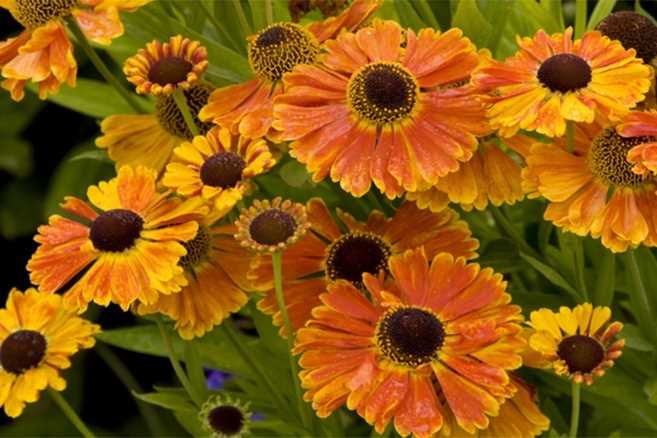
After pruning and deadheading helenium plants, it’s a good idea to give them a boost of fertilizer to support new growth and encourage more blooms. Use a balanced, slow-release fertilizer according to the package instructions. Apply it around the base of the plant, being careful not to get it on the foliage.
Conclusion
Pruning and deadheading helenium plants are simple but essential tasks that help keep the plants healthy and attractive. By following the proper techniques and timing, you can enjoy a longer blooming period and a more vigorous plant.
Dealing with Common Helenium Pests and Diseases
Pests
Helenium plants are generally resistant to most pests and diseases, but there are a few common pests that can cause problems.
- Aphids: These tiny insects can be found on the underside of leaves and feed on sap. To control aphids, you can use insecticidal soap or a strong spray of water to wash them off.
- Spider mites: Spider mites are very small pests that can cause yellowing leaves and fine webbing on the plant. You can control spider mites by spraying the plants with water regularly or using insecticidal soap.
- Slugs and snails: Slugs and snails can cause damage to the leaves and stems of Helenium plants. To control them, you can use traps, barriers, or organic molluscicides.
Diseases
While Helenium plants are generally disease-resistant, there are a few common diseases that can affect them.
- Powdery mildew: Powdery mildew can appear as a white powdery coating on the leaves. To prevent powdery mildew, make sure the plants have good air circulation and avoid overhead watering. If powdery mildew does occur, you can treat it with a fungicide.
- Fungal leaf spots: Fungal leaf spots can appear as dark, water-soaked spots on the leaves. To control leaf spots, remove and destroy infected leaves and ensure the plants have good air circulation.
- Root rot: Root rot can occur in poorly-draining soil and can cause the plant to wilt and decline. To prevent root rot, make sure the soil is well-drained and avoid overwatering. If root rot does occur, you may need to replant the affected plants in fresh, well-draining soil.
Conclusion
By monitoring your Helenium plants regularly and taking proactive measures against pests and diseases, you can ensure their health and prevent any major issues. Remember to practice good garden hygiene by removing and destroying any infected plant material, and follow appropriate cultural practices to keep your Helenium plants thriving.
Dividing and Transplanting Helenium
Helenium plants can benefit from periodic division, which helps to rejuvenate the plant and prevent overcrowding. Dividing and transplanting helenium is a straightforward process that can be done in early spring or fall.
When to Divide Helenium
The best time to divide helenium is in early spring, just as new growth is starting to emerge. However, it can also be divided in the fall, after the flowering period has ended. Division in these seasons allows the plant to establish itself before extreme weather conditions occur.
Steps to Divide and Transplant Helenium
- Start by digging around the entire plant, keeping a wide enough radius to ensure you don’t damage the roots. Gently lift the plant out of the ground and shake off any excess soil.
- Inspect the roots and identify suitable divisions. Look for healthy, robust sections with their own leaf buds or shoots.
- Using a sharp, sterile knife or garden shears, carefully separate the divisions from the main plant. Make sure each division has a good amount of roots attached to it.
- Prepare the transplanting site by digging a hole that is slightly larger than the root ball of the division. Loosen the soil and incorporate some organic matter to improve drainage and fertility.
- Place the division in the hole, making sure the crown is level with the soil surface. Backfill the hole with soil, firming it gently around the roots to ensure good contact.
- Water the newly transplanted division thoroughly to settle the soil and remove any air pockets. Continue to water regularly, keeping the soil moist but not waterlogged, until the division establishes itself.
Caring for Transplanted Helenium
After transplanting, it is important to provide adequate care to help the helenium division establish and thrive:
- Water newly transplanted divisions regularly to keep the soil consistently moist in the first few weeks.
- Apply a layer of mulch around the transplanted divisions to help conserve moisture and suppress weed growth.
- Monitor the plants for any signs of stress or disease, and take appropriate action if needed.
- Fertilize the transplanted divisions with a balanced fertilizer in spring and early summer to promote healthy growth.
- Divided heleniums may take a season or two to fully establish and resume flowering, so be patient and provide proper care.
By dividing and transplanting helenium, you can ensure the continued health and vigor of your plants while also creating new plants to enjoy in different areas of your garden.
Questions and Answers:
What is Helenium?
Helenium is a genus of flowering plants in the sunflower family, native to North and Central America.
Where should I plant Helenium?
Helenium should be planted in full sun to partial shade in well-draining soil.
How do I care for Helenium?
To care for Helenium, you should water it regularly, especially during dry periods, and deadhead the spent flowers regularly to encourage more blooms.
Can I grow Helenium from seeds?
Yes, you can grow Helenium from seeds. Sow the seeds in the spring or fall and lightly cover them with soil. Keep the soil moist until the seeds germinate.
How tall do Helenium plants grow?
Helenium plants can vary in height from 1 to 6 feet, depending on the variety. Some taller varieties may require staking to prevent them from bending or falling over.
Do deer like to eat Helenium?
Deer typically do not like to eat Helenium, as they are generally resistant to deer browsing. However, if there is a shortage of food in the area, deer may eat Helenium as a last resort.







